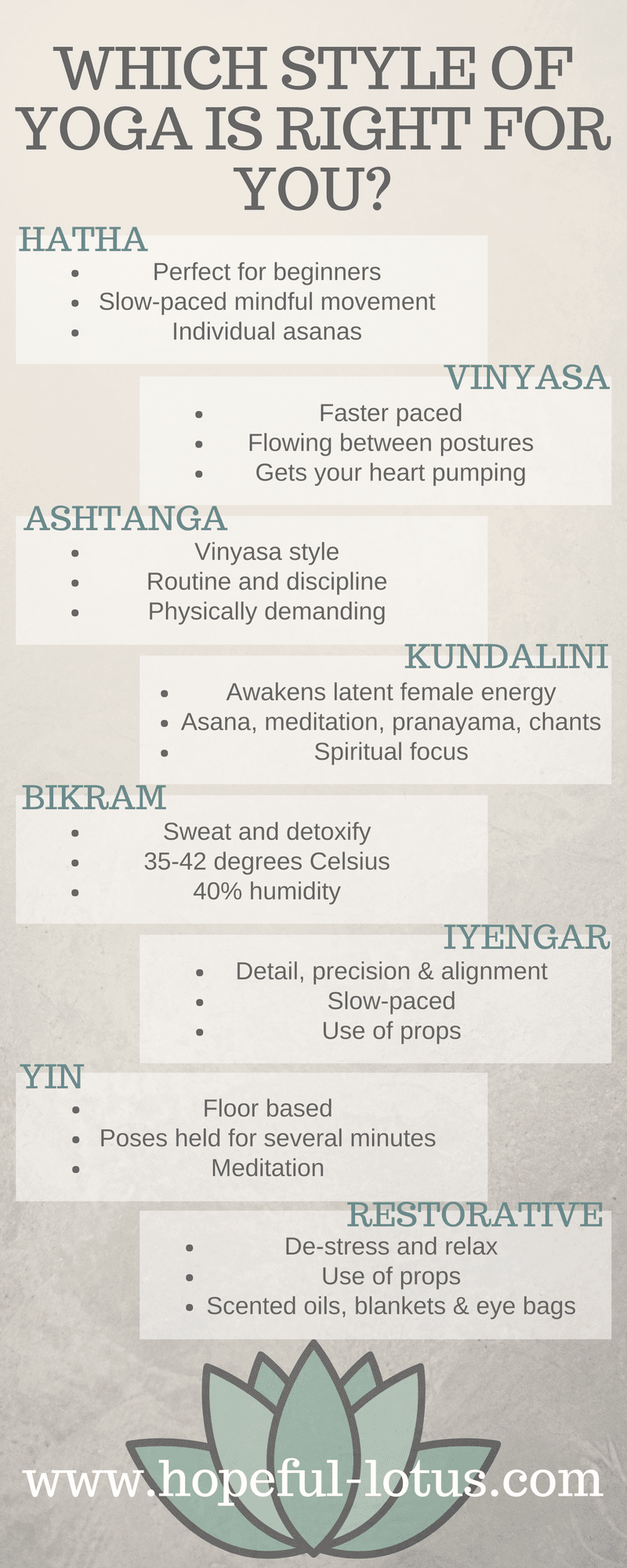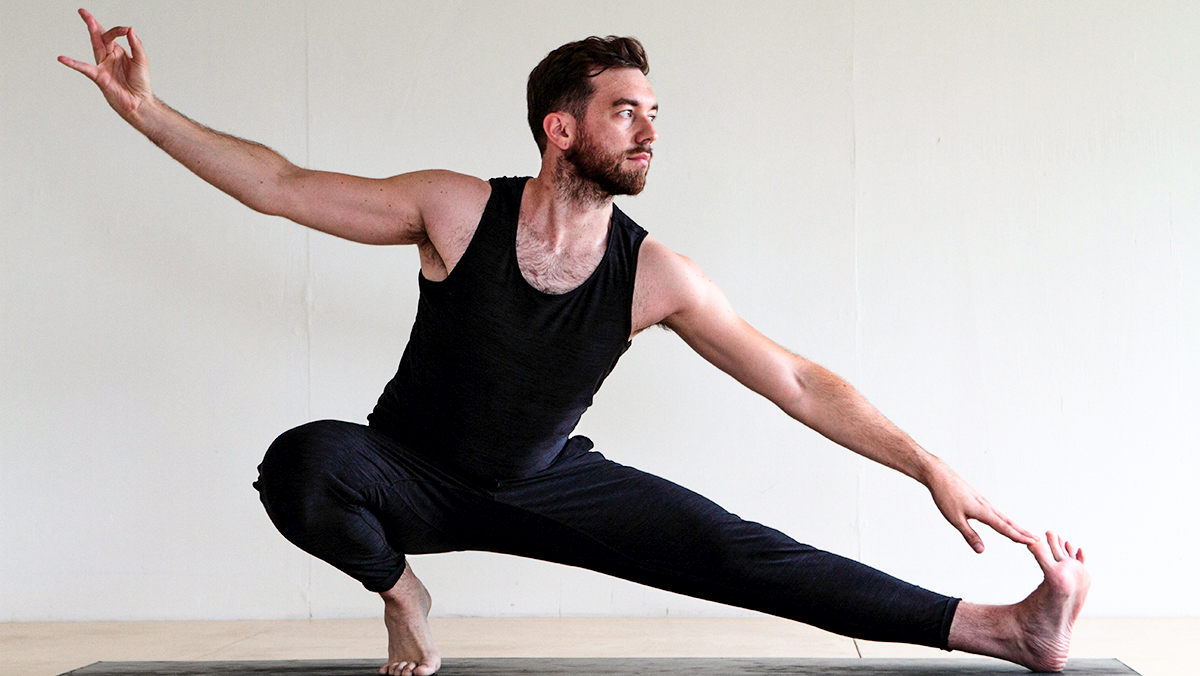
Many people get musculoskeletal problems from yoga. There is a high risk of injury when performing wrist-weighted poses, but there are ways to prevent these accidents. Incorrect wrist alignment can result in sprains and even breaks. When performing these exercises, your wrists and fingers must be evenly spread. To prevent these types of injuries, practice safe postures, and be sure to follow instructions.
Research shows that yoga injuries are on the rise. The number of injuries has increased from 13 in 2000 to twenty in 2001, and from eight to 46 in 2002. However, the Consumer Product Safety Commission's survey is based on sampling and doesn't provide the complete picture. Only a few yoga injury victims make it to the emergency room. Most people seek treatment from their family physicians, chiropractors, and masseuses. Yoga may be a good way to prevent injuries. However, it is important that you understand the limitations of current research.
Improper alignment is often the cause of injuries in yoga. If you're not able to align yourself properly, you may be placing yourself at risk of an injury. An injury-free yoga practice will be avoided by proper alignment. A teacher who has been properly trained in biomechanics should be a must. The right body mechanics are essential for a safe and effective class. An instructor who doesn't know how to teach you the proper technique could cause injury.

The rotator cuff and the muscles of the shoulder are particularly vulnerable to injury, and the binds that link wrists and hands in a particular pose can also cause rotator cuff injuries. Sun salutations, a series that places the upper extremity's weight on the head, can also cause impingement of rotator cuff. These positions can be dangerous if you do too much stretching or forward bending, and are repetitive and repetitive.
There are many types of injuries that yoga practitioners can sustain. Most common injuries are those involving muscles and joints. They are not dangerous and usually do not require medical attention. Yoga poses may be helpful for you if you have an existing problem. Overexertion can cause damage to the shoulder and rotator cuff, which are delicate muscles. It is important to pay attention to the rotator wrist and ensure it is working properly.
Avoid dangerous poses while doing yoga. But there are some common injuries. Text neck is the most common. It occurs when people are too dependent on their phones. The neck muscles are susceptible to injury, so avoiding these positions can prevent injury. The more you practice, you will see the benefits. There are many causes of injuries in yoga, but most are preventable.
The low back is one of the most common injuries in yoga. A low back injury can be caused by excessively curved or twisted joints. Those who have had previous injuries can suffer from this condition by performing certain poses without proper alignment. The shoulder injury is the most common in yoga. This can happen if the shoulder is overworked. Injuries to the upper extremities can include the clavicle (humerus), the scapula, and the humerus.

Improper technique is what causes most yoga injuries. An injury can be caused by overtraining your neck, hips, or other joints. An orthopedist will recommend that you listen to your body and stop any postures that are too strenuous for you. Overdoing it can strain your neck. It takes time to heal a neck injury, so avoid doing more intense yoga exercises. This will help avoid any future complications.
Although the rate of yoga-related injuries seems low, it's important to remember that certain postures can cause pain and can be very painful. These types of injuries rarely occur. These injuries can be caused by repetitive strain or overstretching. Injuries in yoga are most common when performed incorrectly or without proper warming up. When the practitioner does not know the risks involved with the poses, injuries can occur.
FAQ
Do I need to exercise every morning?
No! At least 30 minutes moderate-intensity exercise five days per week is a good goal. This means that you should be able to walk fast enough to feel slightly out of breath, or bike hard enough to sweat.
What does milk do?
Consider what other uses you might have for your milk next time that you buy it. It could also be beneficial to quit drinking coffee.
The benefits of milk have been demonstrated to be both beneficial to children and adults. Children get nutrients like vitamin D, calcium and potassium from milk.
It promotes weight gain, digestion, bone strength, and aids digestion. Dairy products are more beneficial for adults than any other food.
People who have difficulty digesting milk are also likely to be able to enjoy its many benefits, even if they do not have stomach problems.
Consider drinking more milk, instead of sodas or juices. Milk contains more calcium and vitamin D, which can strengthen your bones and teeth.
If you don't like the taste of milk, you can always make your yogurt using plain low-fat milk. Yogurt is a great alternative to milk since it is lower in calories and higher in protein.
Probiotics are also found in yogurt, which help with digestion and boost immunity.
Take a glass warm milk before you go to bed if you are having trouble sleeping. Warm milk helps relax muscles and boosts serotonin levels.
How often should I exercise each week?
It all depends upon how much time you have and what type or exercise you prefer. The general rule of thumb is to exercise aerobically 3 - 5 days per week. You shouldn't do too much. For maximum results, consistent exercise is key to getting the most out of your workouts.
Which exercises work best for you?
It all depends on what type of fitness goals you have. Some people concentrate on endurance activities such running, cycling, swimming. Some people enjoy lifting weights and using resistance bands. There are so many different types of exercise programs available today. Find the best option for you.
Can I go to the gym seven days a week?
You can go to the gym seven times a week, but not at once. This means you need to choose a time when you feel rested and not too tired.
This will help you remain motivated and have more energy to do other activities.
You must also ensure that you eat enough during these times. This will make it so you don't feel tired or sluggish while going to the gym.
Last, you must make sure that there isn’t another thing competing for your attention. For example, if you have children, you may want to avoid exercising on school nights as they will distract you from your workout.
Statistics
- Are You One of the 20% of Guys (mh.co.za)
- An estimated calorie range for moderately active adult males falls between 2,200 to 2,800 calories per day, depending on age. (eatright.org)
- By John Thompson Take a whopping 38% off a set of PowerBlock Pros. (menshealth.com)
- The PRS enabled risk stratification for overall prostate cancer and lethal disease with a four-fold difference between men in the highest and lowest quartiles (HR, 4.32; 95% confidence interval [CI], 3.16-5.89). (pubmed.ncbi.nlm.nih.gov)
- Cardmembers earn 5% Back at Amazon.com with a Prime Credit Card. (amazon.com)
External Links
How To
What nutrients does a man need daily?
Healthy growth and development of men requires healthy nutrition. The body requires vitamins, minerals, proteins, carbohydrates, fats, water, fiber, and other essential elements.
Specific nutrients are also required by the male body at different times during the day. To give you an example, the body uses energy it receives from food to make hormones and antibodies. Protein is needed to build muscles and repair tissue damaged when you wake up.
At night, your body breaks down fat and stores the extra energy as glycogen. Your body will still need nutrients, but it will require fewer calories during this time. If you feel hungry, you may consider having a snack during the evening.
For your body to function properly, it needs adequate amounts of protein and carbs. Muscle soreness can occur if you work out hard.
To prevent this from happening, you need to consume carbs or protein within two hours. Your body will use stored glycogen to produce glucose for energy.
Additionally, it is important to eat protein right away after your workouts are over. This prevents the breakdown of muscle tissue that occurs while you sleep.
Your body produces lactic acid during high levels of physical activity. It is a form of lactic acid that builds up in the bloodstream. This causes fatigue. To avoid this, you should eat foods rich in carbohydrates, such as fruits and vegetables.
Carbohydrates are a good source of energy to help you recover from hard exercise.
Your diet may include lean meats like fish, eggs, milk cheese, yogurt or beans as well as lean proteins such as fish, eggs, egg yolks, cheese, yogurt, bean, peanuts and seeds.
All of these foods contain high quality protein. Protein promotes muscle growth and repairs damaged tissues. It also provides the amino acids your body needs to produce sex hormones and testosterone.
To maintain healthy skin, hair, and joints, you also need sufficient dietary fats. Healthy men need between 20% - 35% of the total caloric intake to be fat.
Fat can help keep your heart healthy and protect you from cancer. It is essential for proper brain function.
Vegetable oils such as sunflower oil and soybean oil can provide most of your fat needs.
These oils are high in monounsaturated fatty acids (MUFAs). MUFAs help lower cholesterol and reduce inflammation. They protect your cells and prevent damage from free radicals.
Saturated fats are found in animal products including meat, dairy products, butter and other dairy products. SFAs can increase LDL ("bad") cholesterol as well as triglycerides. They also promote weight gain and belly fat.
Polyunsaturated oils (PUFAs), are found in plant-based foods like nuts, seeds and vegetable oils. PUFAs improve cardiovascular function and decrease inflammation. They can also control blood sugar levels and cholesterol.
Men with low HDL ("good") cholesterol often suffer from erectile dysfunction. Consuming high amounts of saturated fats can increase bad cholesterol and lower good cholesterol.
Men who eat lots of red meat or pork can develop prostate problems. This is because these foods contain high amounts of nitrates. When heated, nitrates are converted to nitrosamines. These compounds cause cancer.
Nitrites and other harmful chemicals are common in processed meats. Avoid them.
The American Heart Association recommends limiting red meat intake to two meals per week. Instead, choose poultry or fish, beans, tofu and whole grain bread.